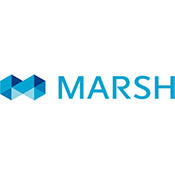What’s Brewing Ottawa-Gatineau is your opportunity to connect and exchange with peers during these times of social distancing.
Watch past session recordings below or register for an upcoming session here.




The following are responses from our speaker, Jessica Zhang-Chapman, CPA, CGA, CIA, Welch LLP to the questions posted during the session.
Question: The primary source of revenue at my organization comes from the government funding. Are we qualified for any of the COVID-19 related government subsidies talked about today?
Welch Jessica: The legal status of the entity is likely to be an NPO or a registered charity? Irrespective of the sources of revenue, if the Org. experienced the required revenue declined threshold (15% in CEWS Period 1, 30% in period 2 to 4, and any % of decline from periods 5 and onwards), the Org may qualify for the CEWS (Canada emergency wage subsidy). With the 10% TWS (temporary wage subsidy), there’s no revenue decline is required to qualify for NPOs / registered charities. If it is appropriate to connect me with the sender of this question, I will be pleased to have a 15-min call (courtesy of Welch?) to review their eligibility.
Question: Home office expenses related … Can I (the employer) recommend the temporary flat rate method (i.e. the $2 per work day) to my employees, such that I do not have to issue any T2200s?
Welch Jessica: Answered during the webinar. Employers can recommend, but it is the employee who is to decide which method to use. If employees eligible for claiming home office expense and have chosen to use the detailed method, employers will have to issue T2200S, assuming the employees are not entitled to claim other employment expenses (e.g. motor vehicle, parking, travel, etc.)
Question: If my employees have chosen to use the temporary flat rate method, is there any documentation I, the employer need to provide to the CRA?
Welch Jessica: No.
Question: Is there a difference between how working from home is applied to employees and the business owner who is also an employee?
Welch Jessica: Answered during webinar. The same criteria apply to assessing employees’ eligibility to claim home office expenses deduction would apply to shareholder-employees. When shareholder-employees (or business owner who is also an employee), if they claim other employment expenses, they’ll have to be prepared to demonstrate to the CRA that the other employment expenses claimed were in their capacity as employees, not as business owners. Otherwise, CRA may assess shareholder benefits on the additional unsupported employment expenses.
Question: For the spare bedroom example, you’d need to re-assign that room as a workspace. In other words, if there is still a spare bed, dresser, closet with your seasonal clothes, for example – you would not be able to claim 100%?
Welch Jessica: Agreed. Or the taxpayer will have to discount the % of employment-use of the designated room from 100%.
Question: Are water bills considered part of utilities?
Welch Jessica: YES https://www.canada.ca/en/revenue-agency/services/tax/individuals/topics/about-your-tax-return/tax-return/completing-a-tax-return/deductions-credits-expenses/line-229-other-employment-expenses/work-space-home-expenses/expenses-can-claim.html
Question: Under home office equipment, if an employee had to purchase a desk and the employer reimburses is this covered by “non-taxable unless more than $500” rule?
Welch Jessica: Will the employee get to keep the desk as his/her personal property? If the desk is considered the employee’s personal property, and he/she uses it in carrying out employment duties, it would be covered in the $500 non-taxable benefit threshold for home office equipment. If the desk cost $<=$500, then 100% non-taxable benefit. If the desk cost >$500 (say $650), the employer will have to report $150 as taxable benefit on the employee’s T4 slip.
If the desk remains the property of the employer’s, then the cost would not be included in the $500 rule. It would be like the employer provided computers, laptops, etc. The concept of taxable benefit or non-taxable benefit simply do not apply.
Question: Does the new rent subsidy program include property rented from the Provincial Government? The previous version did not allow this.
Welch Jessica: What is the legal status of your organization? If it is a public institution, which includes municipalities and local governments, crown corporations, public universities, colleges and schools and hospitals, it would not qualify for the existing rent subsidy (CERS). If your organization is a not-for—profit or a registered charity, or other type of eligible entity which is detailed out on the CRA’s website under the “are you an eligible business, charity, or not-profit” subheading and if your organization is not related to the landlord to whom the rent is paid to, the rent paid or payable (to be paid within 60 days) would quality under the existing rent subsidy program. https://www.canada.ca/en/revenue-agency/services/subsidy/emergency-rent-subsidy/cers-who-apply.html
The current CERS program mirrors the CEWS program with respect to the determination of eligibility.
As for the property that your organization rents from the provincial government, it will have to be meet the qualifying property definition (copied here from BILL C-9). If it meets the qualifying property definition, and if your organization qualifies for CEWS, I would say your org. would generally qualify for CERS.
Qualifying property, of an eligible entity for a qualifying period, means real or immovable property (other than property that is a self-contained domestic establishment used by the eligible entity or by a person not dealing at arm’s length with the eligible entity, or part of such a self-contained domestic establishment, the land subjacent to the self-contained domestic establishment and such portion of any immediately contiguous land as can reasonably be regarded as contributing to the use and enjoyment of the self-contained domestic establishment as a residence) in Canada used by the eligible entity in the course of its ordinary activities. (bien admissible)
Question: You mentioned the 40 hours normal work week. Our employment place work week is 35 hours (7 hours/day). Does that still make us eligible?
Welch Jessica: Answered during the webinar.
The eligibility is dependent on the meeting of the following two conditions:
- Worked from home in 2020 due to COVID, either the employee was required to work from home or chose to work from home due to COVID in 2020, and
- The employee worked >50% of the time during 4 consecutive weeks in 2020.
If both conditions are met and the employees are eligible to claim, if they choose to use the detailed method and use a common/shared space at their home to carry out employment duties, they will have to build in the factor of 35/168 hours instead of 40/168 hours in every 7 consecutive days.






















